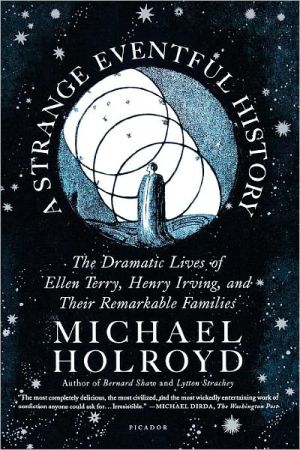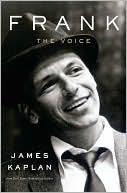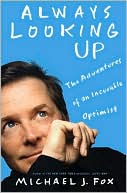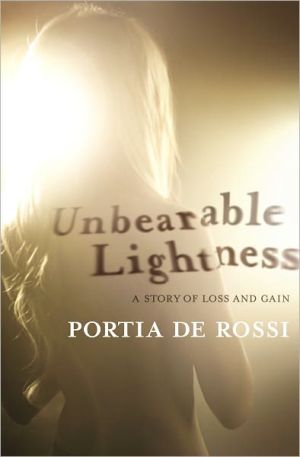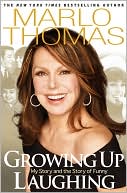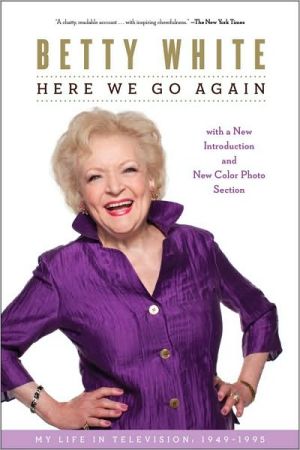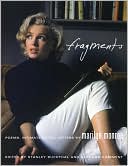A Strange Eventful History: The Dramatic Lives of Ellen Terry, Henry Irving, and Their Remarkable Families
In A Strange Eventful History, one of our greatest living biographers turns his attention to a gruop of history's most influential performers, a remarkable dynasty that presided over the golden age of theater.\ Ellen Terry was ther era's most powerful actress. George Bernard Shaw was so besotted that he wrote her letters almost daily, but could not bear to meet her, lest the spell she cast from the stage be broken. Henry Irving was a merchant's clerk who by force of will and wit became one of...
Search in google:
From perhaps our greatest living biographer, a portrait of a fascinating theater family, and of a turning point in popular entertainment in the Western world.
A Strange Eventful History\ The Dramatic Lives of Ellen Terry, Henry Irving, and Their Remarkable Families \ \ By Michael Holroyd \ Picador\ Copyright © 2010 Michael Holroyd\ All right reserved.\ ISBN: 9780312429492 \ \ \ 1\ \ A Story in a Book\ \ ‘The past is now to me like a story in a book’, Ellen Terry wrote almost forty\ \ years later in 1906. It was a fairy story, her life; or perhaps one of those\ \ melodramas she had been playing onstage for as long as her admirers could\ \ remember. That June marked her fiftieth year in the theatre and the event\ \ was celebrated with wild delight in the streets of London. Crowds filled\ \ Drury Lane from midday till six o’clock in the evening – they would have\ \ stayed longer, singing, dancing, growing hoarse from cheering, but their\ \ rejoicings had to give way for Ellen’s evening performance at the Court\ \ Theatre in Sloane Square. She was playing Lady Cicely Waynflete, a\ \ character Bernard Shaw had specially written for her, in Granville-Barker’s\ \ production of Captain Brassbound’s Conversion.\ \ In the public imagination Ellen Terry had become an enchantress.\ \ Floating serenely across the stage, she was seen as a symbol of pure romance,\ \ virginal, unblemished, still in need of male protection: a ‘wonderful being’,\ \ the American actress Elizabeth Robins described her, ‘with the proportions\ \ of a goddess and the airy lightness of a child’. She ‘encompassed the age’,\ \ wrote the theatre historian Michael Booth, ‘in a way no English actress had\ \ done, before or since’.\ \ Her beauty was not created by paint and lip-salve nor was it the illusory\ \ beauty of theatrical make-believe. She possessed a natural radiance and\ \ ‘moved through the world of the theatre’, Bram Stoker recorded, ‘like\ \ embodied sunshine’. The artist Graham Robertson believed her to be ‘the\ \ most beautiful woman of her time’ and many people agreed with him. With\ \ the ‘Hair of Gold’ and ‘Crimson Lips’ celebrated in a sonnet by Oscar Wilde,\ \ and a mysterious smile which perhaps concealed no mystery, she was\ \ recognised as a Pre-Raphaelite ideal. Her reputation was extraordinary: not\ \ only was she a monument to female virtue, but also said to be the highestpaid\ \ woman in Britain. Virginia Woolf was to speculate as to whether the\ \ course of British history might have dramatically changed had she actually\ \ been queen, while Queen Victoria, meeting her at Windsor Castle in 1893,\ \ acknowledged her to be tall, pleasing and ladylike – everything a queen\ \ should be. Describing the scenes at Drury Lane as ‘a riot of enthusiasm, a\ \ torrent of emotion’, The Times dubbed her ‘the uncrowned Queen of\ \ England’ – though by now she had begun to resemble a Queen Mother.\ \ Every Victorian gentleman who saw her at the Lyceum Theatre performing\ \ opposite the great Sir Henry Irving fell in love with her – and no\ \ Victorian wife objected. Some young men, it was said, would actually\ \ propose marriage to their girlfriends with the words: ‘As there’s no chance of\ \ Ellen Terry marrying me, will you?’ Others, equally dazzled, reacted\ \ differently. ‘I ceased to consider myself engaged to Miss King forthwith’,\ \ wrote H.G. Wells on first seeing Ellen Terry walking one summer’s day,\ \ looking like one of the ladies from Botticelli’s La Primavera. He remembered\ \ being permitted to ‘punt the goddess about, show her where white\ \ lilies were to be found and get her a wet bunch of forget-me-nots among the\ \ sedges . . .’ She seemed to have the secret of eternal youth, to live beyond\ \ good and evil. In the opinion of Thomas Hardy, her diaphanous beauty\ \ belonged to a different order of being – a ‘sea-anemone without shadow’ or\ \ a miraculous dancing doll like Coppelia, apparently brought to life by the\ \ toymaker’s magic, ‘in which, if you press a spring, all the works fly open’.\ \ Even in her fifties she was still a marvellous child, delicious and fascinating.\ \ Many people had expected her to marry Henry Irving – they were such a\ \ romantic couple onstage. It was rumoured that he secretly loved her – for\ \ how could he not have done so? Yet she was not regarded as a dangerous\ \ woman like the notorious Mrs Patrick Campbell or Edward VII’s mistress\ \ Lillie Langtry. On the contrary she appeared an example of young\ \ motherhood as well as First Lady of the London stage. Her public image was\ \ all the more extraordinary since it conflicted dramatically with the facts of\ \ her life. And if those facts now seemed ‘like a story in a book’, this was partly\ \ because she had recently decided to write a book. She began her memoirs\ \ that year.\ \ ‘I never felt so strongly as now’, she said, ‘that language was given me to\ \ conceal rather than to reveal – I have no words at all to say what is in my heart.’\ \ When the book was published, it appeared to Virginia Woolf like ‘a bundle\ \ of loose leaves upon each of which she has dashed off a sketch . . . Some very\ \ important features are left out. There was a self she did not know . . .’\ \ ‘I was born on the 27th February, 1848’, she wrote. After her death, when\ \ these memoirs were being prepared for a new edition, her editors loyally\ \ claimed that ‘we have found Ellen Terry the best authority on Ellen Terry’.\ \ Yet there are potent omissions and genuine confusions in her writings which\ \ cover little more than half her adult life and grow ragged towards the end. As\ \ to the facts, she gives not only the wrong year for her birth but is also\ \ uncertain where it took place.\ \ Alice Ellen Terry was born on 27 February 1847, at 44 Smithford Street,\ \ theatre lodgings above an eating house in Coventry, the city of three spires.\ \ On her birth certificate her father gave his occupation as ‘Comedian’. Her\ \ earliest memory was of being locked in a whitewashed attic of some lodgings\ \ in Glasgow one summer evening while her parents and her elder sister Kate\ \ went off to the theatre. The Terrys were strolling players who travelled the\ \ theatre circuits and were then touring Scotland. But going further back,\ \ Ellen wondered, ‘were we all people of the stage’?\ \ \ \ 2\ \ The Terrys\ \ Her maternal grandfather, Peter Ballard, was by profession a builder who\ \ worked as a master sawyer in the docklands of Portsmouth, a busy seaport\ \ and garrison town threaded with insalubrious cobbled streets and dark alleys\ \ where, like nocturnal animals, beggars, prostitutes and thieves lay in wait.\ \ He was also a Wesleyan preacher who spoke on Sundays in the smarter areas\ \ of the town with their muddle of demure Georgian houses and medieval\ \ churches. He disapproved of the town’s theatre, a barnlike building in the\ \ High Street, which had been temporarily shut down in 1836 for ‘unseemly\ \ and improper conduct’. But his daughter Sarah was to run off at the age of\ \ twenty-one with Ben Terry, the twenty-year-old son of an Irish innkeeper\ \ at the Fortune of War tavern in Portsmouth, a mere boy who had been\ \ picking up a meagre living working the drums in the theatre. In fact both\ \ Ben and Sarah kept their marriage secret from their parents. They were\ \ married on 1 September 1838 in the church where Charles Dickens had\ \ been baptised: St Mary’s in Portsea, an area, near the docks, of taverns,\ \ shops and brothels that catered for the navy.\ \ Their future was full of risk and excitement. They were a striking\ \ couple: he ‘a handsome, fine-looking, brown-haired man’ in peg-top\ \ trousers; she tall and graceful, with a mass of fair hair and exceptional large\ \ blue eyes. Ben seems to have taken it for granted that his wife would\ \ belong to the theatre and that all their children would be ‘Precocious\ \ Prodigies’ like the celebrated juvenile actress Jean Davenport. She had\ \ played at Portsmouth and was to become the original of Dickens’s ‘Infant\ \ Phenomenon’ in Nicholas Nickleby, giving the theatre there a permanent\ \ place in stage history. The stage was everything to Ben, and Sarah was\ \ quickly caught up by his fervour and enthusiasm. As soon as they were\ \ married, they set off for whatever adventures might await them on the\ \ open road.\ \ Ben had trained himself to be a competent supporting actor. As a teenager\ \ he hung around the stage door of the Theatre Royal where his brother\ \ George played the fiddle and got him casual work shifting scenery, painting\ \ and repairing props, and then playing the drums. He became mesmerised by\ \ what he saw: the frolics, farces and burlesques, the dissolving spectacles and\ \ nautical imitations, the scenarios with songs, the ‘budgets of mirth and\ \ harmony’ and juvenile performances in which the current child genius\ \ would dash round and about and in and out, playing all the roles, sometimes\ \ assisted by a ‘marvellous dog’. When the professional season ended, the\ \ theatre was used for lavish balls and assemblies, or taken over by smart\ \ thoroughbred officers of the garrison and their well-groomed ladies who,\ \ under aristocratic patronage and to the beat of rousing marches from the\ \ regimental band, would put on ostentatious amateur performances, their\ \ playbills beautifully printed on pink silk. From watching rehearsals of\ \ the comedies and melodramas, Ben Terry learnt a good deal about the\ \ technique of acting – how to play the well-recognised roles of Heavy Father,\ \ Low Comedian, Walking Gentleman, Singing Servant, Character, Ingenu\ \ and so on. He was particularly fascinated by the expansive actor-manager of\ \ the stock company there. William Shalders appeared to be everywhere,\ \ doing everything, all the time. ‘He painted the scenery, made the props, ran\ \ the box office’, recorded the biographer Joy Melville, ‘and even wrote\ \ pirated versions of London dramas in which his wife and daughter acted the\ \ minor roles, and visiting actors the lead parts.’ He strongly influenced Ben\ \ Terry, who saw him as someone on whom he might model his own career.\ \ ‘My sister Kate and I had been trained almost from our birth for the stage’,\ \ Ellen wrote, ‘. . . our parents had no notion of our resting.’ Usually she was\ \ bundled up and carried off to her mother’s dressing-room in whatever town\ \ or village they had reached. ‘Long before I spoke in a theatre, I slept in one’,\ \ she remembered.\ \ These days of travelling suited Ben’s cheerful and impulsive nature. On\ \ him the sun always seemed to shine, though his family remained poor. It was\ \ a more worrying time for Sarah. Moving from place to place on carts and\ \ wagons, the children often slept on a mattress laid out on the floors of attics\ \ and played in the small areas below. To add to their income, Sarah would\ \ take on work as Wardrobe Woman or, under the name ‘Miss Yerret’ (an\ \ approximate reversal of Terry), play the role of Walking Woman to swell a\ \ crowd or decorate a chorus whenever she was not pregnant or recovering\ \ from a miscarriage. ‘She worked hard at her profession’, Ellen wrote, and she\ \ brought up all her children to be ‘healthy, happy and wise – theatre-wise, at\ \ any rate’.\ \ Six of her nine surviving children were to have careers onstage and\ \ Benjamin, who felt he had no dramatic talent, was obliged to work his\ \ passage to Australia and later seek employment in India so as to escape\ \ the force-field of his family destiny. Sarah, whose mother came from a\ \ respectable Scottish family socially superior to most theatre families, saw to\ \ it that her children were kept neat, clean and tidy. She was forever sewing,\ \ holding things together. The girls, she decided, needed little general\ \ education and only the boys were initially sent to school.\ \ Ellen was soon being taught to read, write and speak properly by her\ \ parents. Ben was ‘a very charming elocutionist’, Sarah ‘read Shakespeare\ \ beautifully’ and they ‘were unsparing in their corrections’. In the late\ \ Victorian and Edwardian theatre Ellen Terry and Johnston Forbes-\ \ Robertson were said to be the only actors who ‘delivered the language of\ \ Shakespeare as if it were their natural idiom, and whose beauty of diction\ \ matched the beauty of the words’. In the opinion of her son, Gordon Craig,\ \ she ‘was very much a daughter of Shakespeare, and when she spoke his\ \ prose it was as though she but repeated something she had heard at home –\ \ something said that morning’.\ \ Ellen quickly learnt how to walk, breathe and cry onstage: in short, how to\ \ behave. She had a genius for pleasing people and even when she mixed up her\ \ lines or got caught in a trap-door, fell over onstage or laughed when she should\ \ have cried, they applauded her from the stalls and galleries. She was, as one\ \ critic called her, ‘a perfect little heap of talent’.\ \ Even so, she was not considered quite so talented as her elder sister. Kate\ \ Terry began her career at the age of four, dancing a hornpipe in a sailor suit,\ \ and was later to display what Charles Dickens called ‘the very best piece of\ \ womanly tenderness I have ever seen onstage’.\ \ The two little girls were born at a fortunate time in the history of the\ \ British stage. In 1843, a year before Kate’s birth, a new Theatre Act was\ \ passed which finally broke the monopoly held by the Theatres Royal in\ \ Drury Lane and Covent Garden. These had been the only two theatres in\ \ the country licensed by the Master of the Revels to perform ‘legitimate’\ \ drama under letters patent granted in 1662 by Charles II – though these\ \ licences had been gradually extended to cities of royal residence and\ \ elsewhere through special arrangements. The bawdy, licentious wit of the\ \ late seventeenth century had reflected the amiable frivolity of Charles II’s\ \ court, and would eventually lead to a severe reaction. In 1737, provoked by\ \ Henry Fielding’s political satires and personal allusions, Robert Walpole\ \ took statutory powers to control dramatic performances by appointing an\ \ Examiner of Plays. On behalf of the Lord Chamberlain (who took the place\ \ of the Master of Revels), this examiner was to license all dramatic works for\ \ performance in public places. One consequence of this strict licensing\ \ system was that Restoration plays were largely replaced by rowdy entertainments\ \ that did not need a licence and that made theatres places of illrepute:\ \ music halls and drinking dens at risk of being devoured by riots and\ \ fires, abominable places to which respectable people – people like Ellen’s\ \ grandfather Peter Ballard – never went. The 1843 Act, which was to spread\ \ ‘legitimate’ theatre through the country, retained the Examiner of Plays,\ \ whose job was to encourage the staging of polite drama.\ \ The Terry family belonged to a theatre that became dominated by a\ \ procession of famous actor-managers. They produced the great Shakespearean\ \ dramas, often in sentimentalised versions and with their parts adapted to\ \ suit the type of character-acting at which each excelled – the specialist\ \ eccentricities of John Hare, the graceful diction and classical good looks of\ \ Forbes-Robertson, the delicious light comedy performances of Charles\ \ Wyndham, Beerbohm Tree’s luxurious decadence and genius for burlesque,\ \ George Alexander’s aristocratic charm, the perfect deportment of Martin-\ \ Harvey, Gerald du Maurier’s easygoing nonchalance. All these and others,\ \ following in the steps of Sir Henry Irving, whose speciality lay in exploiting\ \ the sinister components of romantic melodrama, were to reflect, with their\ \ glittering knighthoods, the genteel revolution that had taken place in the\ \ British theatre by the time of Ellen Terry’s jubilee.\ \ Though her attempted stage debut as ‘the Spirit of the Mustard-Pot’\ \ ended in tears, Ellen was to remember her early years of travelling from one\ \ theatre town to another as being intensely happy. Like her father she had a\ \ naturally impulsive temperament whereas Kate seemed to have inherited\ \ her mother’s carefulness. In 1852 the actor-manager Charles Kean, hearing\ \ of the eight-year-old Kate Terry’s remarkable performance as Prince Arthur\ \ in King John, invited her to recreate the role at the Princess’s Theatre in the\ \ West End of London. She went there with her mother and the younger\ \ children, and the following year Ellen, who (aged six) had been ‘looking\ \ after’ her father, travelled down with him from Liverpool to join Kean’s\ \ company.\ \ The morality of employing very young children onstage intermittently\ \ agitated the Victorians. There were those who, like Bernard Shaw, were to\ \ argue that ‘dressing the stage’ with enticing seven- and eight-year-olds,\ \ soliciting infants to make money for the proprietors of theatres, was an\ \ exploitation of impoverished families. How was it possible to justify this\ \ parading of prettily dressed boys and girls, who had not even reached their\ \ teens and had never been to school, so that adults might enjoy a repertoire\ \ of sensational entertainments? Why should theatre managers consider themselves\ \ exempt from the regulations that protected young children from\ \ being exploited in factories and workshops? Their descriptions of theatres as\ \ perfect schools of deportment, where the charges’ characters were moulded\ \ by masterpieces of English poetry, were pure commercial bluff. But the\ \ Revd Charles Dodgson claimed that listening to the words of elevating\ \ plays – such as radically cleansed versions of Shakespeare – was an education\ \ in itself and kept children away from truly vicious pursuits on the\ \ streets. Besides, you had only to see these theatre children themselves to\ \ understand how they rejoiced in their work. ‘They like it better than any\ \ game ever invented for them’, Dodgson wrote in a letter to The Theatre. This\ \ passion for acting gave children ‘a better average for straightness of spine,\ \ strength, activity, and the bright happy look that tells of health’, he argued.\ \ ‘The stage child “feels its life in every limb” . . . where the Board school\ \ child only feels its lessons.’\ \ While writing her memoirs, Ellen Terry often wished she had been given\ \ some school lessons on grammar, punctuation and spelling to guide her\ \ through this task. They had worked her hard in Charles Kean’s Company,\ \ so hard that on leaving the stage with the other children, sometimes in the\ \ middle of the night, her legs aching, she would creep into the green room\ \ and fall asleep. She hated the labour that led up to her performances, the\ \ wearisome learning of lines and the endless rehearsals lasting all day,\ \ sometimes without lunch or supper. Charles Kean, ‘a short, thickset man’\ \ with ‘chubby features’, was a pedant of modest talent who liked to boast of\ \ the verisimilitude of his sets and properties. He enjoyed conducting\ \ rehearsals by ringing a hand-bell from the auditorium. His wife, a fine\ \ intelligent actress called Ellen Tree, ‘parrot-beaked and double-chinned,\ \ moving solemnly within the periphery of her crinoline’, would then ascend\ \ the stage and put everything to rights. ‘I admired and loved and feared\ \ her’, Ellen remembered. These were exhausting sessions, yet she would not\ \ have exchanged her life with anyone. ‘My whole life was the theatre’, she\ \ wrote, ‘. . . during my three years at the Princess’s I was a very strong, happy,\ \ and healthy child.’\ \ The Princess’s Theatre was a narrow gas-lit building between a furrier’s\ \ and a tobacconist’s in Oxford Street. It had opened in 1840 and been used\ \ for concerts and operas until, following the new Theatres Licensing Act, a\ \ few plays began to be performed there. Charles Kean, son of the famous\ \ Drury Lane tragedian Edmund Kean (who had unsuccessfully tried to\ \ detach his son from the stage by sending him to Eton), took over the theatre\ \ in 1850 and gave his management there a reputation for extravagant\ \ productions of Shakespeare played against ‘authentic scenery’. These were\ \ interspersed with rather tepid translations of French comedies and some\ \ swashbuckling historical dramas.\ \ At the Princess’s, Ellen learnt how to ‘walk the plank’, dance a minuet,\ \ draw her breath in through her nose and begin to laugh, how to produce her\ \ vowels correctly, tuck in her chin and puff out her chest when making an\ \ entrance, and also how to manoeuvre gracefully (not jumping like a\ \ kangaroo) while wearing a trailing flannel dress. It was ‘heavy work for\ \ a child, but I delighted in it’.\ \ She delighted especially in what she called ‘the actual doing of my part’.\ \ She played important parts, small parts, dumb parts (the best of which was\ \ walking on carrying a basket of doves, agreeably aware of being regarded\ \ with bitter envy by the other children, and feeling as if this dove-bearer were\ \ the principal attraction in The Merchant of Venice). In Richard II she climbed a\ \ pole to a dizzy height during a street scene; in Henry VIII she was ‘top angel’;\ \ and in a comedietta by Edmund Yates she played a tiger (‘Tiger Tom’)\ \ wearing a brilliant little pair of top boots. In another production she was ‘a\ \ little boy cheering’, but even in these tiny roles such opportunities for acting\ \ precocious boy-girls were exciting. In the Christmas pantomime of 1857 she\ \ played the blonde-haired good fairy Goldenstar, and the frightening bad\ \ fairy Dragonetta with flashing eyes and dark looks. It seemed as if she could\ \ be anyone and that everything was possible: changes of gender, character,\ \ appearance, species and identity. The world of the theatre was limitless.\ \ Ellen’s London debut at the age of nine was as the little prince Mamillius\ \ in The Winter’s Tale. Increasingly aware of what she looked like, and getting\ \ to recognise the effects she created, she was able many years later to recall\ \ wearing a red-and-silver dress and oddly baggy pink tights for Mamillius,\ \ and a row of tight sausage curls arranged with perfect regularity by her\ \ mother. For two wonderful scenes (before she ‘died’ offstage), she propelled\ \ across the boards a splendid ‘property’ – a go-cart built like a toy depicted on\ \ a Greek vase in the British Museum. On the first night, with Queen Victoria\ \ and Prince Albert in the theatre, when told by Leontes (Charles Kean) to ‘go\ \ play’, she did so with such verve that she tripped over the handle of her gocart\ \ and fell on her back. But it did not matter. The Times described her\ \ performance as ‘vivacious and precocious’ and the Revd Charles Dodgson\ \ noted in his diary on 16 June 1856 that he ‘especially admired the acting of\ \ the little Mamillius, Ellen Terry, a beautiful little creature, who played with\ \ remarkable spirit and ease’. Ellen cherished this role so jealously that she\ \ did not miss any of the 102 nights of the run, and her understudy, Clara\ \ Denvil, a little girl with eager eyes, never got the chance to show herself.\ \ In the autumn of 1856 Ellen was given the role of Puck in A Midsummer\ \ Night’s Dream. She played it well, romping on the stage while putting a girdle\ \ around about the earth, full of mischief and vitality. Looking in her mirror\ \ she had been dismayed to see how gawky she was growing. But in the role\ \ of Puck she could escape this dismaying image for it was ‘a part in which the\ \ imagination can run riot’. In Shakespeare’s moonlight she entered a\ \ fairyland where every wish came true. ‘I grew vain’, she remembered, ‘and\ \ rather “cocky”.’\ \ Ellen’s last major role at the Princess’s Theatre was as Prince Arthur in\ \ King John – the part in which her sister Kate had triumphed and which had\ \ been responsible for bringing the Terry family to London. It was the first\ \ really demanding character she had played and, aged eleven, she found the\ \ rehearsals miserably difficult. In a moment of exasperation, Mrs Kean\ \ slapped her face, unexpectedly getting from her the expression of morti-\ \ fication and tears she wanted when Hubert threatens to blind the little\ \ prince who pleads for his life.\ \ Ellen was determined not to fail where her sister had succeeded. She\ \ would get up secretly in the night to practise her lines, experiment with her\ \ voice and examine her gestures in the mirror. For the first time she realised\ \ what perseverance and labour a successful career in the theatre would\ \ demand from her and ‘all vanity fell away from me’.\ \ Her Prince Arthur was judged a success. But at the end of the 1859 season\ \ Charles Kean gave up the Princess’s Theatre and sailed to the United\ \ States. Kate and Ellen were earning good money for their ages, but the\ \ Terry family had been growing and, without a steady income, Ben had to\ \ leave London with his daughters and once more seek his fortune on the\ \ road.\ \ \ \ Excerpted from A Strange Eventful History. By Michael Holroyd.\ Copyright © 2009 by Michael Holroyd.\ Published in the United States by Farrar, Straus and Giroux in hardcover, and by Picador in trade paperback.\ \ All rights reserved. This work is protected under copyright laws and reproduction is strictly prohibited. Permission to reproduce the material in any manner or medium must be secured from the publisher.\ \ \ Continues... \ \ \ \ Excerpted from A Strange Eventful History by Michael Holroyd Copyright © 2010 by Michael Holroyd. Excerpted by permission.\ All rights reserved. No part of this excerpt may be reproduced or reprinted without permission in writing from the publisher.\ Excerpts are provided by Dial-A-Book Inc. solely for the personal use of visitors to this web site. \ \
List of Illustrations xiiNotes on the Text and Acknowledgements xviRumours of a Death Foretold 1Part 11 A Story in a Book 52 The Terrys 83 Mirror, Mirror, on the Wall 164 Heaven and Holland Park 225 England's Michelangelo 266 The Kingdom of Pattledom 297 A Marriage Is Arranged and a Deed of Separation Signed 358 The Kate Terry Valse 479 Found Drowned 5210 Happiness for a Time 5411 All Change 6312 A Failure to Be Proud Of 6613 Men! 79Part 214 What's in a Name? 9115 Entrances and Exits 9816 Their Coronation 10817 Our Lady of the Lyceum 11918 Interval: Irving on Holiday 12719 His Shylock 12920 Shakespeare's Lovers 13521 Children! 14322 Our American Cousins 15823 From Malvolio to Mephistopheles 17024 Death of a Husband, Death of a Lover 179Part 325 Her Lady Macbeth 19326 Ted and Edy and Harry and Laurence 20227 All Is True 22028 After the Shooting 22729 Counter Attractions 23430 One More Laurel Wreath 24331 Mixed Fortunes 24732 The Irish Pretender 26633 Wishful Thinking 27634 Choices 28435 Confusions 29536 For Love or Money 303Part 437 Made in Heaven 32138 A Sea of Troubles: Helgeland and Hungerheart 33339 The End of Irving 354Part 540 Women! 36741 Brothers 392Part 642 Family Affairs 40943 Masks and Faces 43544 Not Quite Alone 47045 The Long Game of Patience 47846 An Occasion 493Part 747 For Friendship's Sake 51348 Good Night Unto You All 53149 White Candle, Aged Face 553An Outline of Sources 575Select Bibliography 585Index 591
